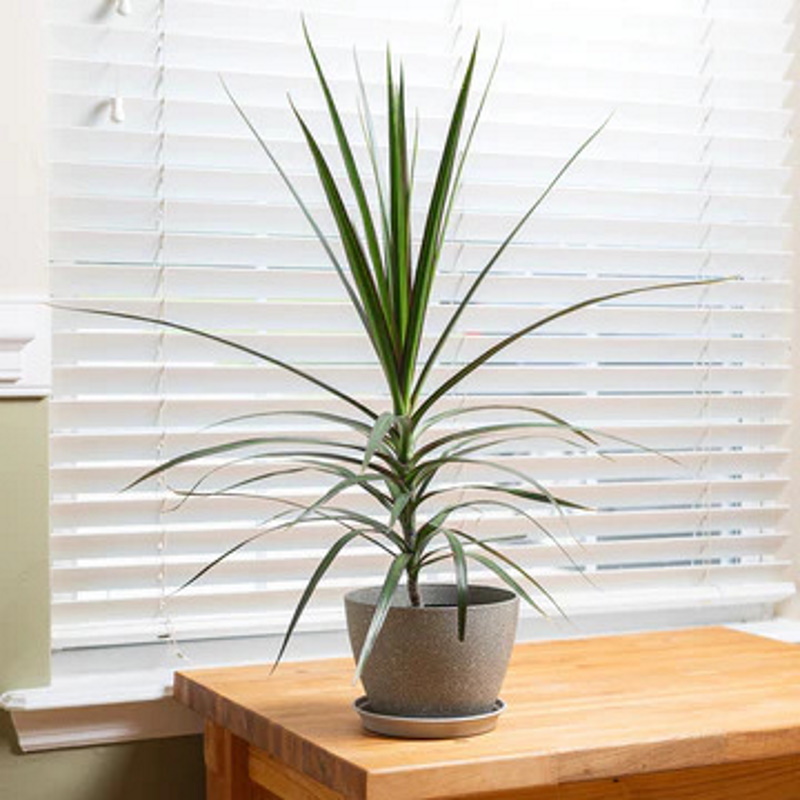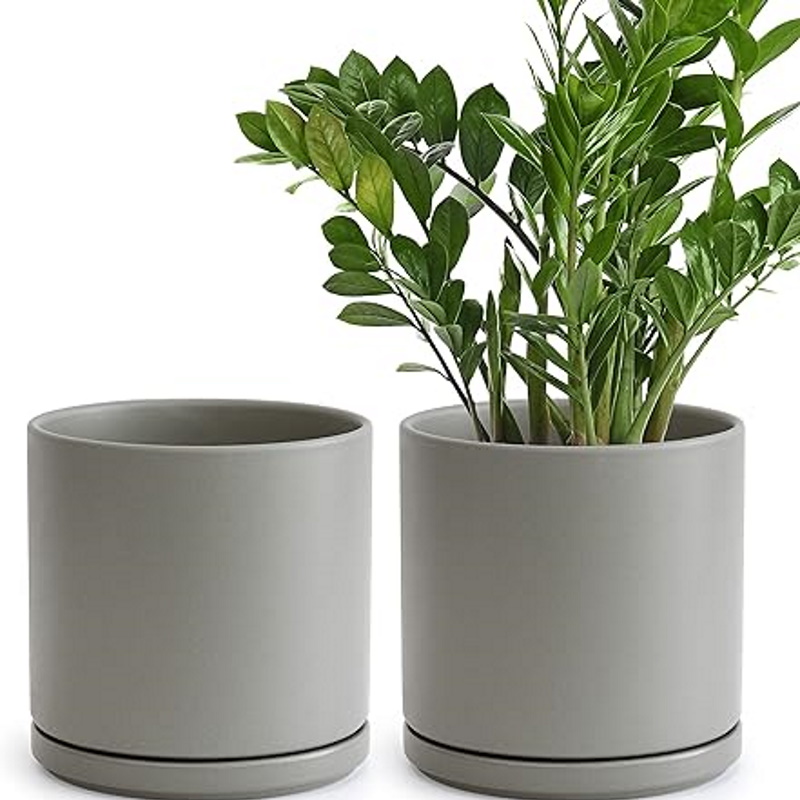How to repot a dragon tree – plus expert tips on when to do it
Repotting your dragon tree will help it to grow even bigger


Dragon trees are having a moment and are predicted to be one of the biggest houseplant trends for 2024. Dragon trees are part of the dracaena family, native to tropical climates in Africa.
The most popular indoor tree variety of dragon trees is the Dracaena marginata, a beautiful tall indoor plant with slim trunks and fountains of slender leaves. These trees can grow up to six feet in height on average, so it's important to repot them as they become larger.
'Repotting your dragon tree is important for several reasons,' says Autumn Hilliard-Knapp, houseplant expert from Perfect Plants. 'It allows more space for root growth and uptake of nutrients and water. The fresh potting mix also provides essential nutrients and promotes good drainage. Repotting your dragon tree can help prevent the plant from becoming root-bound and rejuvenate its growth and overall health,' she adds. Here, we have enlisted advice from experts about how to successfully repot your dragon tree to help promote further growth.
When to repot a dragon tree
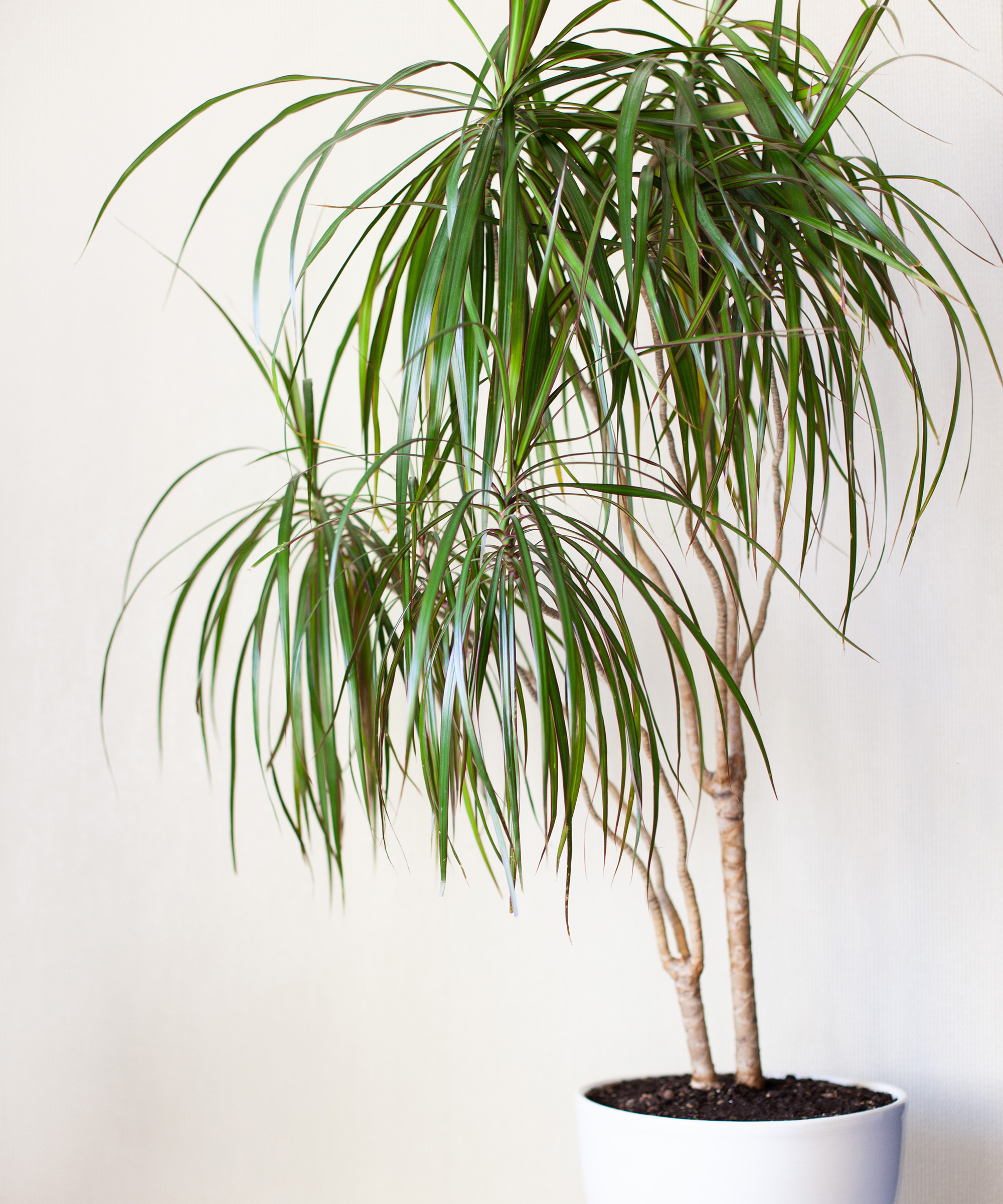
The first thing you need to do is establish that it is time to repot your dragon tree. But how can you tell?
'To determine when to repot your dragon tree, look for signs such as roots growing out of the drainage holes, stunted growth or the plant becoming top-heavy,' says Autumn.
You can also gently remove your dragon tree from its pot and assess how much room the roots have left to grow. If it's looking like they will soon run out of soil, it's time to move your plant into a larger home.
'You want to repot your dragon tree if the plant dries out quickly when you water it,' notes Julie Bawden Davis, plant expert at Healthy Houseplants. This is another indication that the roots in your dragon tree pot are becoming overcrowded.
'Repot during the spring or summer months using a well-draining soil mix and a container only slightly larger than the current one,' says Autumn.
It's always best to give your plants maintenance like this while they are actively growing to boost growth further. Rehoming your outgrown dragon tree in the warmer months will prove beneficial with new shoots soon appearing.

Autumn is a horticulture specialist and marketing professional at Perfect Plants Nursery. With four years of experience in the horticulture industry, she has developed a passion for helping people create beautiful indoor and outdoor spaces to enjoy. Her expertise in horticulture encompasses a broad range of activities, including plant care and selection, landscape design, and maintenance.

Julie Bawden-Davis is a garden author and University of California Certified Master Gardener, who has written several gardening books, including Indoor Gardening The Organic Way. In addition to running HealthyHouseplants.com, she shares indoor gardening advice on her YouTube channel @HealthyHouseplants.
How to repot a dragon tree
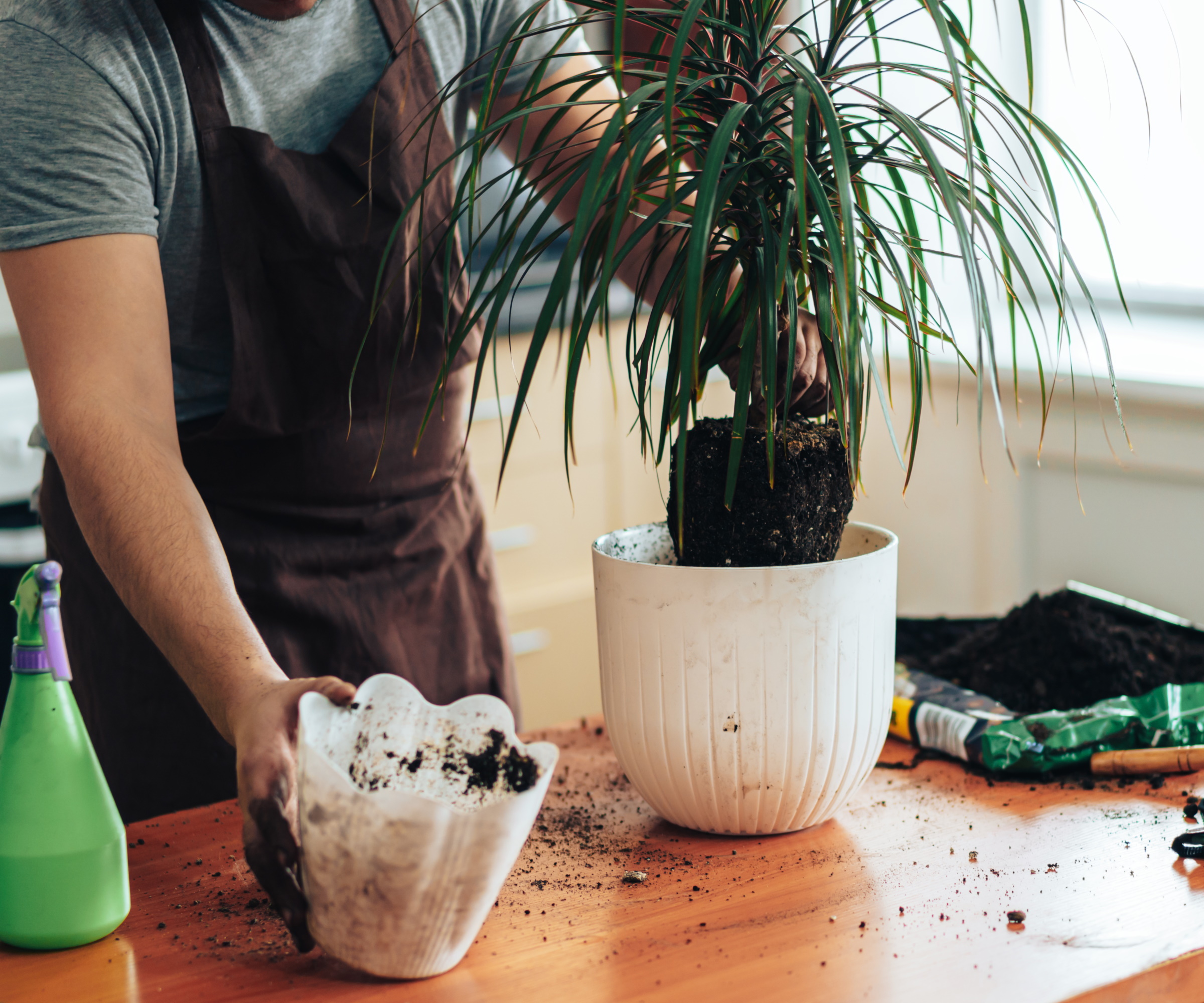
When it comes to repotting your dragon tree, there are just a few things you will need:
- A larger container than the current one
- Well-draining potting mix
- Pruning shears
- Watering can
You can then start by carefully taking your dragon tree out of its current container and placing some potting mix in the bottom of the new, slightly larger one.
'Planting your dragon tree in too big of a pot will lead to root rot because when the pot is too big, there is excess wet soil,' says Julie. 'Use a high-quality potting soil that is water retentive, yet contains a draining agent such as perlite or pumice,' she adds.
It's key to place your dragon tree in the center of the new container before filling the sides with more potting mix. 'Press the mix lightly to ensure good contact with the roots,' Autumn says.
And it's as simple as that. Take care to then water your dragon tree well and continue providing optimal care, including plenty of bright, indirect light.
'Water sparingly until you see new growth, indicating that the plant has settled in and is beginning to grow again,' says Andy Burde, houseplant expert at the House Plant shop.

Andy is a seasoned horticulturist and houseplant expert with HousePlantShop.com. With years of experience in plant care, propagation, and interior gardening, he specializes in nurturing healthy, vibrant houseplants and advising enthusiasts on best practices. His focus is on sustainable and practical methods that cater to both beginners and advanced plant lovers.
Shop materials to repot your dragon tree
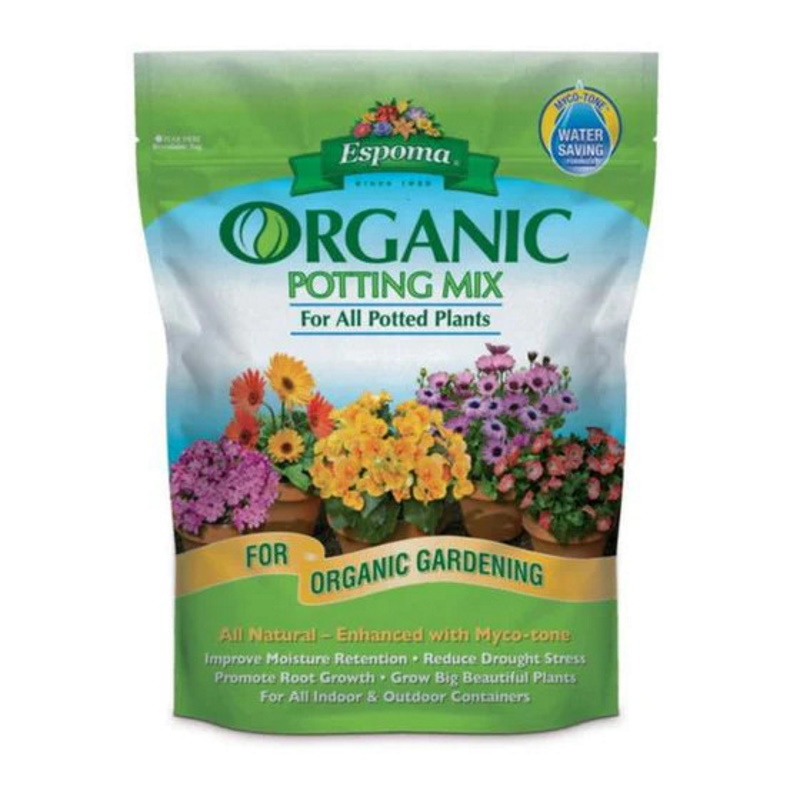
This all-purpose organic soil helps feed indoor and outdoor plants while draining water well.
FAQs
How often should I repot my dragon tree?
Dragon trees, or dracaenas, are average-rate growers. You can expect to see a couple of inches of growth each year and don't need to worry about it outgrowing its current container regularly. Generally speaking, it is recommended that you repot your dragon tree every couple of years. You will know it's time to repot it when the roots don't have much more room to grow. Likewise, if the foliage starts to turn yellow it may be a sign that your dragon tree is struggling with root rot and a lack of room for roots to grow.
What is the best container for a dragon tree?
One of the most common indoor plant mistakes you can make with a dragon tree is overwatering it, so a container that helps you manage moisture is ideal.
'Dragon trees thrive in planters with good drainage,' says Andy Burde, houseplant expert at the House Plant shop.
'Terracotta pots are ideal because they allow the soil to breathe and help prevent waterlogging, which is crucial for the health of your dragon tree,' he adds.
It's best to opt for a planter that allows your dragon tree to drain properly, so any container that has drainage holes will work well.
Dragon trees are a classic addition to have in your houseplant collection for height and structure. While they may not need to be repotted often, it's important to repot your dragon tree when needed to ensure it continues to thrive and grow. If you are in the market for indoor trees that don't need much attention, you may find this guide on the best low maintenance trees to grow indoors helpful.
Sign up to the Homes & Gardens newsletter
Design expertise in your inbox – from inspiring decorating ideas and beautiful celebrity homes to practical gardening advice and shopping round-ups.

Tenielle is a Gardens News Writer at Homes & Gardens. She holds a qualification in MA Magazine Journalism and has over six years of journalistic experience. Before coming to Homes & Gardens, Tenielle was in the editorial department at the Royal Horticultural Society and worked on The Garden magazine. As our in-house houseplant expert, Tenielle writes on a range of solutions to houseplant problems, as well as other 'how to' guides, inspiring garden projects, and the latest gardening news. When she isn't writing, Tenielle can be found propagating her ever-growing collection of indoor plants, helping others overcome common houseplant pests and diseases, volunteering at a local gardening club, and attending gardening workshops, like a composting masterclass.
-
 This Michelle-Pfeiffer-approved chair is made of a forebodingly unusual material, opening the debate: Is it a rustic stunner, or a danger to sitters?
This Michelle-Pfeiffer-approved chair is made of a forebodingly unusual material, opening the debate: Is it a rustic stunner, or a danger to sitters?The actress took to Instagram with a chair made of a controversially sharp material – and fans are unsure of how they feel about it
By Sophie Edwards Published
-
 How to clean a patio – 6 different methods, and when you must use a chemical cleaning agent
How to clean a patio – 6 different methods, and when you must use a chemical cleaning agentFrom manual scrubbing, natural solutions or calling in the pros, industry experts reveal the benefits and considerations of each method
By Andy van Terheyden Published
